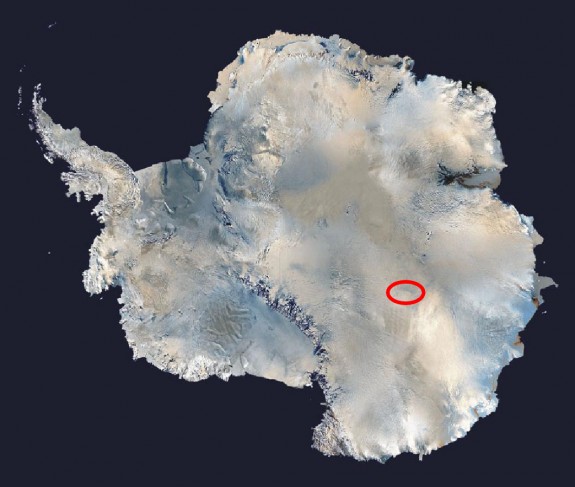No Life Found In Lakes Beneath Antarctic Glaciers—Yet
Scientists hoping to find life beneath Antarctic ice have so far come up empty-handed
Earlier this year, a decades-long drilling program came to completion. Russian scientists had aimed to punch through nearly 2.4 miles of ice over Antarctica’s subglacial Lake Vostok, and in February the scientists announced that they had made it through to the water hidden below. Cut off from the rest of the world beneath the crushing ice, with no access to the atmosphere for the past 15 million years, Lake Vostok is a truly isolated system. Scientists are hoping to find life in the deep, in the form of extremophilic bacteria that can survive on what little nutrients and energy made it into the lake.
As reported by Nature, the first water sample collected by the scientists at Vostok has come up empty. This sample represents only the very uppermost surface layers of the lake, as it was collected from the water that pushed up through the drill hole and froze to the drillbit. The lack of microbes doesn’t necessarily mean that the lake is lifeless, however. Scientists expect to find bacteria in two places within subglacial lakes: at the top of the lake between the ice and the water, and in the sediment at the bottom of the lake. More detailed measurements carried out by the Vostok team next year could give a better sense of whether or not anything is alive down there.
In Antarctica, some 387 lakes have so far been found undernearth the thick ice sheet. The Russian’s Vostok mission is to be joined this winter by a British-led quest to subglacial Lake Ellsworth, to be followed by an American mission to the Whillans Ice Stream.
More from Smithsonian.com:
68-Year-Old Explorer Plans to Cross Antarctica…in Winter
Ancient Climate Change Meant Antarctica Was Once Covered with Palm Trees
/https://tf-cmsv2-smithsonianmag-media.s3.amazonaws.com/accounts/headshot/smartnews-colin-schultz-240.jpg)

/https://tf-cmsv2-smithsonianmag-media.s3.amazonaws.com/accounts/headshot/smartnews-colin-schultz-240.jpg)